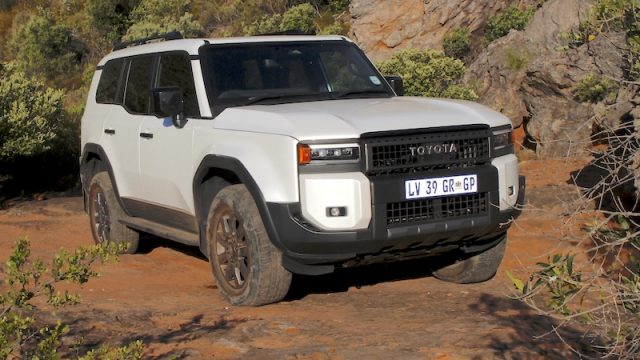We get behind the wheel of the Toyota Land Cruiser Prado 2.8GD VX-R again, this time taking it beyond the city limits, to dirt roads and a 4×4 route in the Western Cape.
In my earlier review of this Land Cruiser after driving it on urban roads, I criticised its lack of perceived quality. The Prado, once a symbol of ruggedness and luxury, felt somewhat underwhelming compared to some of its predecessors and the Land Cruiser 300. Despite its array of gadgets, the Prado lacks the solid, “chiseled-from-granite” feel that defined the previous two generations.
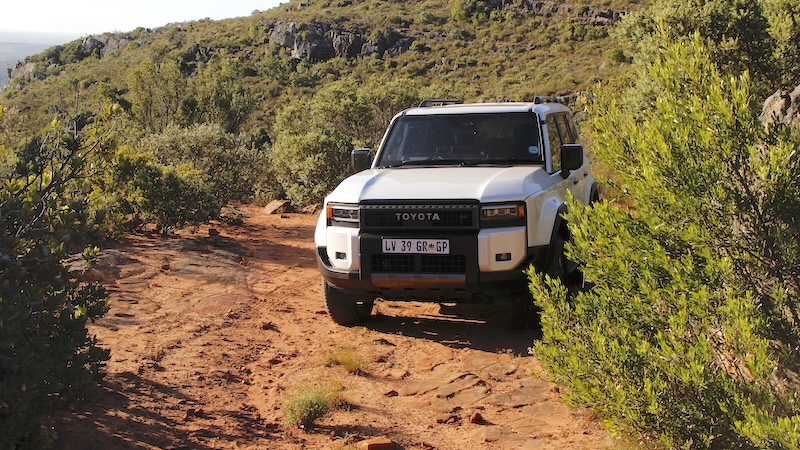
Old but gold
Older models, like the mid-2000s J120 Prado (pictured below), had a noticeably more premium feel. For instance, the J120’s cabin remained impressively quiet even at high speeds, which is something the new Prado struggles to match.
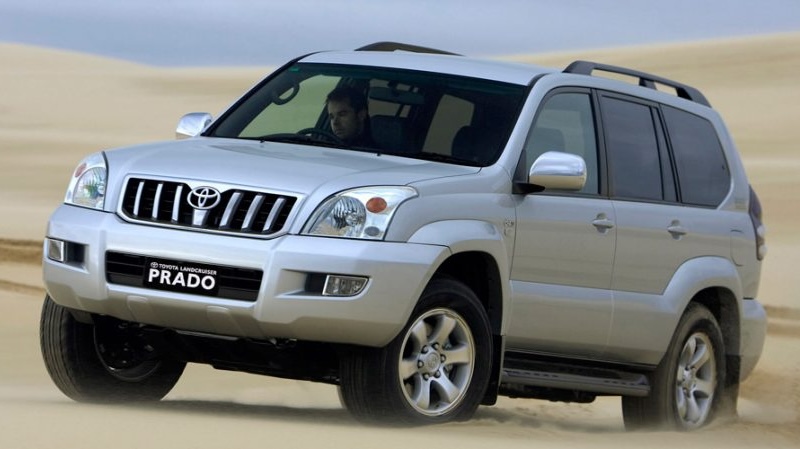
Instead, you’re greeted with vibrations through the accelerator pedal when applying light pressure at around 80 km/h.
Another downside on the open road is the Prado’s flat, upright windscreen. While it adds to the classic boxy styling, it increases air resistance and is particularly prone to damage. The test vehicle, for example, already had a small star-shaped crack from a flying stone, fortunately outside the driver’s line of sight.
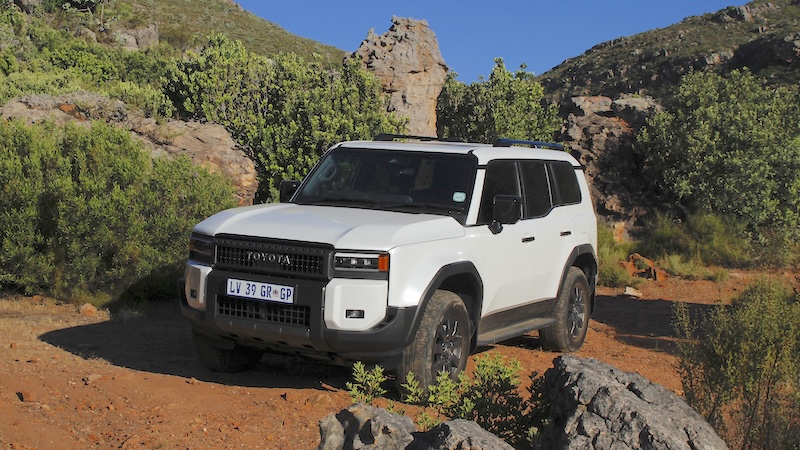
It’s not all bad
Fortunately, the Prado excels where it matters to many: off the beaten track. During a 320 km drive from Hermanus to Boegoeberg 4×4, both places are in the Western Cape, the Prado proved itself to be an excellent gravel traveller. It feels light but steady on dirt roads, and handles uneven surfaces with confidence and ease.
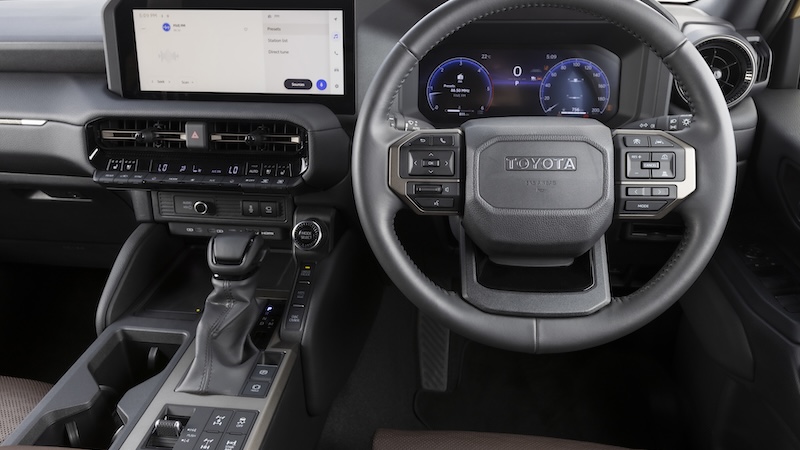
This exceptional comfort and stability significantly reduce fatigue during long-distance journeys, particularly over rough or challenging terrain. It makes the Prado a premium yet practical option for driving along remote roads in countries like Lesotho, Namibia, Botswana, Zimbabwe, and Mozambique.
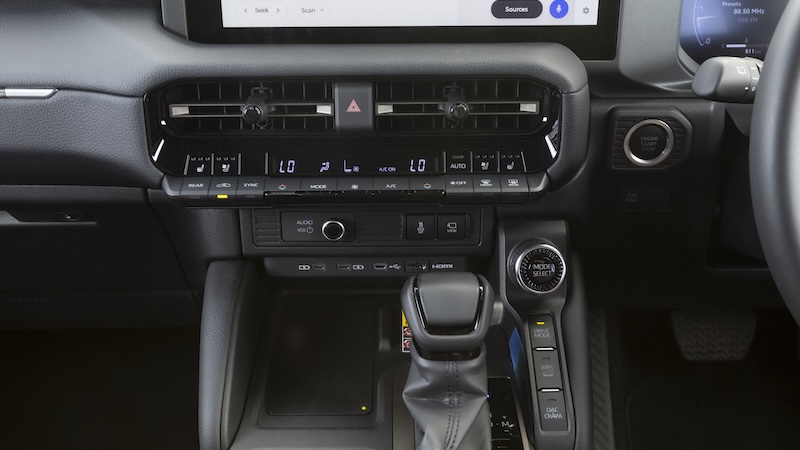
The Prado’s impressively engineered combination of chassis, suspension, wheels, and tyres minimises driver exhaustion but also lowers the likelihood of damage that could interrupt your journey and put you on the vulture restaurant’s menu.
Making the rough smooth
Leaving the tarred roads for the first time on this journey, I reduced the tire pressure from 2,3 to 1,8 bar. This improved driving comfort on the dirt roads while minimising the risk of tyre overheating when briefly returning to the scorching tar en route to our destination.
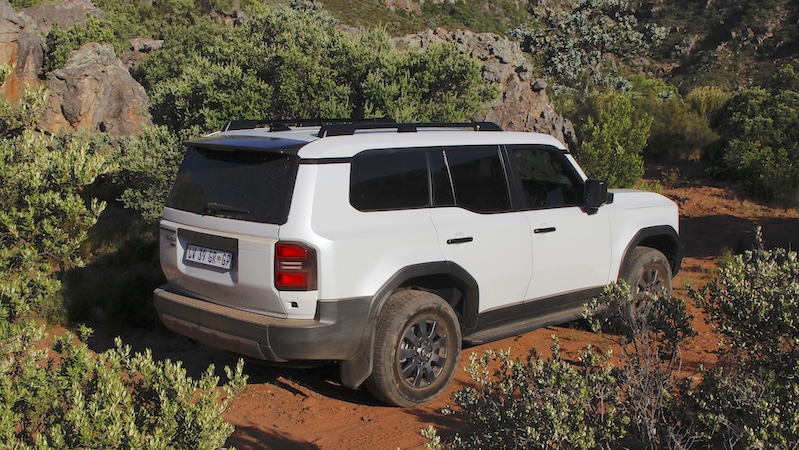
Gravel GOAT?
We were lucky to avoid the tar roads for most of the trip. There were moments, though, where I caught myself hitting up to 120 km/h on gravel – way faster than ideal – but the Prado simply inspires that much confidence. At 2 520 kg, it’s 100 kg lighter than the Land Cruiser 300, yet somehow feels even lighter and nimbler.
Unlike on highways, its Hilux diesel engine’s lack of power is not much of a problem on dirt. Here, stability, control, and a compliant suspension are more important than quickly overtaking another road user.
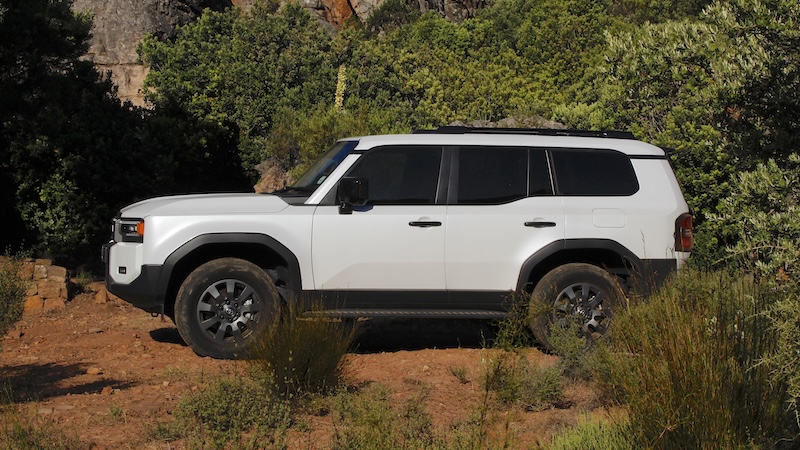
The proving ground
After a four-hour drive, we reached Boegoeberg 4×4, a peaceful retreat near Clanwilliam in the Western Cape. It’s located on a working farm called Lambertshoek and offers shady camping sites, cottages, mountain bike trails, plenty of swimming spots, and challenging 4×4 routes.
Our stay in a remote sandstone house was a practical base to test the Prado’s off-road capabilities while enjoying the peaceful surroundings. Incidentally: the annoying warning sound of the Prado’s tailgate – when it opens or closes – is something Toyota should permanently silence.
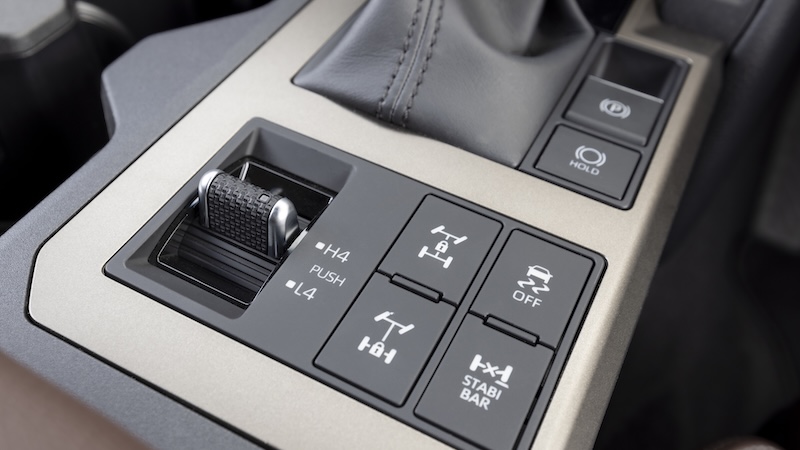
Crawling up that hill
The Prado features Toyota’s Crawl Control, which allows the vehicle to move slowly and in a controlled manner up or down steep slopes and easily deal with obstacles. The driver can easily control the speed at which it climbs; from one (drowsy snail) to five (cocaine tortoise).
In addition, the Prado has several off-road modes, including settings for sand, mud and rocky terrain. This “off-road for beginners” selection system makes it easier for inexperienced drivers to tackle difficult routes with a little more confidence.
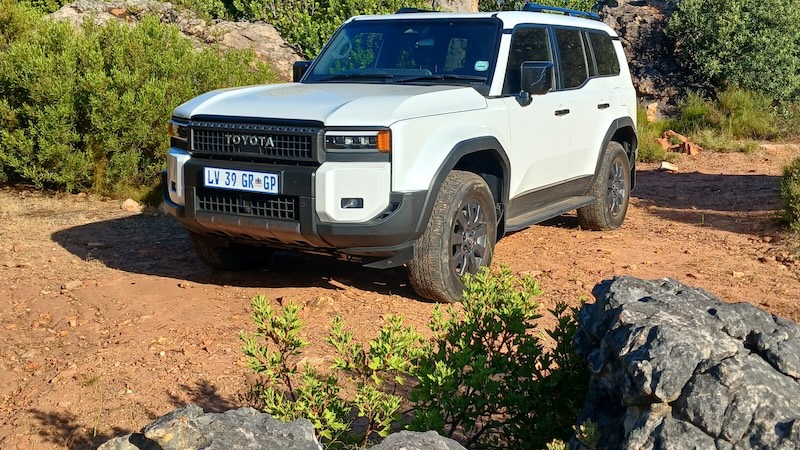
Mind those boards
However, there’s a downside. The running boards, intended to assist shorter passengers with entry and exit, proved problematic on the 4×4 route. One board sustained a scrape from a rock it crossed, which slightly bent a mounting bracket below. For serious off-roading, it’s best to swap these steps for rock sliders or remove them entirely.
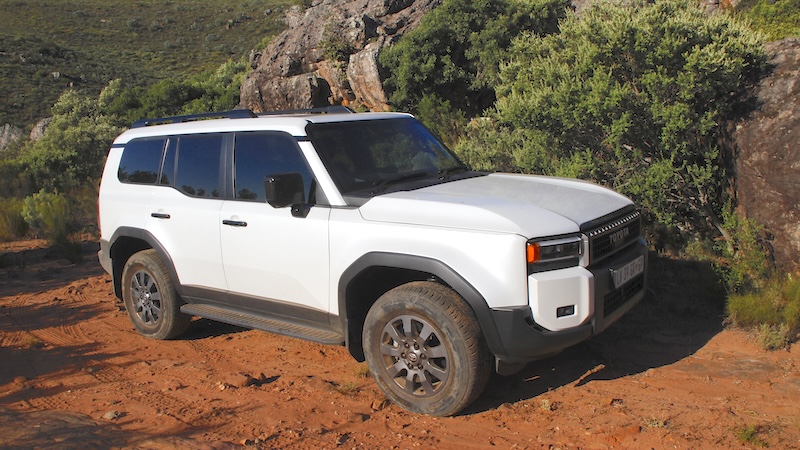
Ground clearance
The Prado’s ground clearance is adequate for most routes, although it is slightly less than that of a Fortuner, 4×4 Hilux or Land Cruiser 300. The specific location of the exhaust pipe as well as the spare wheel under the vehicle can limit the departure angle on more technical routes. However, this was not a problem during the test, possibly because I kept the tire pressure at a relatively high 1,8 bar.
Conclusion
The Land Cruiser Prado J250 is a capable off-roader and a real beast on gravel roads. Its confident handling and off-road features such as crawl control make it a dream vehicle for adventurers.
Its lack of refinement is hard to ignore, however, especially given its hefty R1 470 600 price tag.
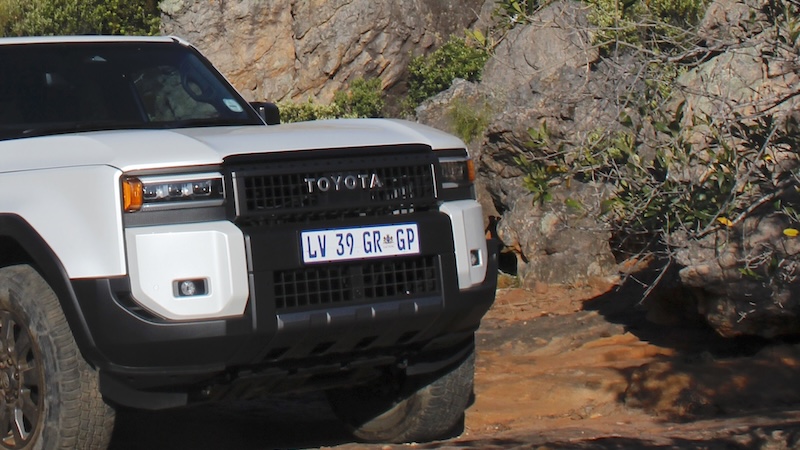
A Ford, maybe?
For buyers who value off-road capability, the Prado remains an attractive option. But it’s definitely worth considering the Ford Everest 3.0TD V6 4WD Platinum (R1 278 000), which offers similar capabilities and a sophisticated interior.

If rugged reliability, comfort on poor roads, and off-road capability are top of your list, the Prado is hard to beat. But for those looking for an all-in-one luxury vehicle like the Land Cruiser 300, the Prado may fall short. It scores 4 out of 5.
4.0 out of 5.0 starsRelated product offers
For more information about Boegoeberg 4×4, visit Boegoeberg4x4.co.za or WhatsApp Sybrie on 083 632 2634.


